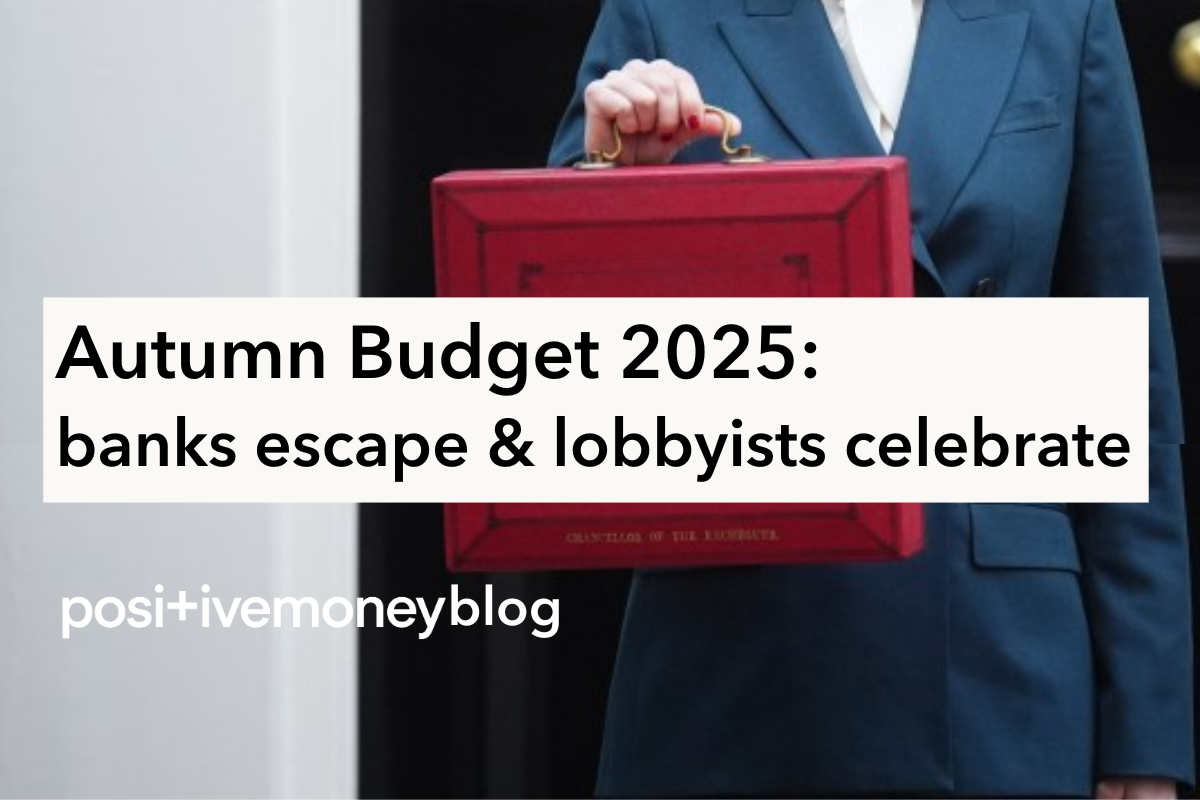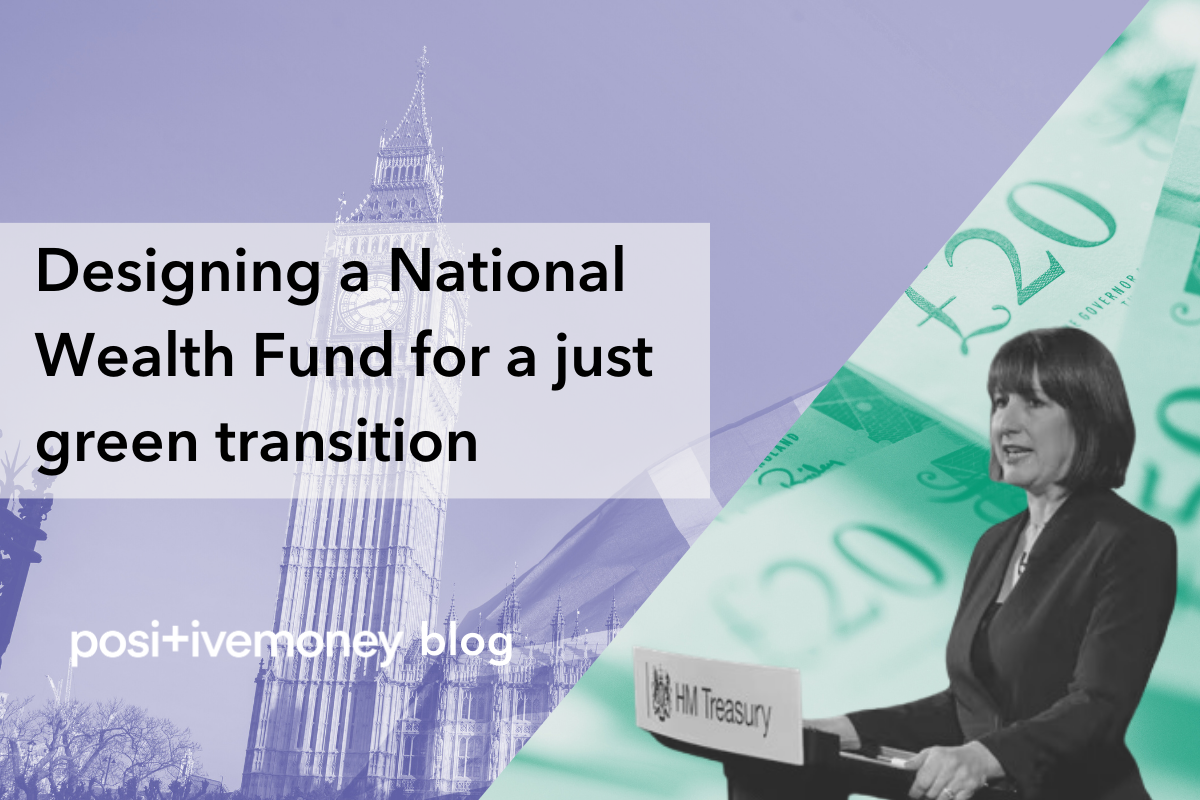
Finance and DemocracyUK
26 November 2025
The Labour government’s new National Wealth Fund could be the cornerstone of financing a just green transition, if designed correctly.
Last week the new Labour government announced the launch of its National Wealth Fund (NWF), and the King’s Speech this week confirmed that it would be put on a permanent statutory footing through a National Wealth Fund Bill.
From the details released so far, it seems as though the NWF will be more than just a new fund - rather it could form the umbrella that the UK’s existing state-owned financial institutions (SOFIs), namely the UK Infrastructure Bank (UKIB) and the British Business Bank (BBB) would sit under. This offers an opportunity to redesign the UK’s small and fragmented public finance ecosystem, empowering it to drive a just green transition.
Alongside the government’s announcement, the National Wealth Fund Taskforce Labour commissioned while in opposition published its report, which explored design features and recommended a number of next steps, which indicated there are still open questions on a number of issues, and a lot more work to be done before it can be secured in legislation.
For now, the NWF will use UKIB as a proxy, giving it an additional £7.3 billion of funding (which would bring UKIB’s financial capacity up to nearly £30 billion). However, as the New Economics Foundation points out, an additional £7.3 billion over five years won’t nearly be enough public investment to meaningfully accelerate the green transition.
The NWF Taskforce report seems to base design recommendations, such as aggregating SOFIs under one umbrella, on KfW, Germany’s national development bank, which has been successful in delivering significant public investment while the central government pursues extremely tight fiscal rules. However KfW’s £580 billion balance sheet dwarfs the scale of what has been announced for the NWF - a UK NWF would need to grow to more than £460 billion to reach the same size per-capita.
The scale and success of Germany’s KfW is derived from its ability to leverage its balance sheet by issuing its own debt. Though this debt is public debt guaranteed by the federal government, it does not interact with debates on fiscal rules, because Germany follows the international norm of excluding public corporations from its target of general government gross debt. However, from what we’ve seen so far, there is no indication that a UK NWF would be empowered to raise funds in such a way, at least not initially. Rather, like UKIB and BBB, it seems as though a NWF would rely on a fixed pot of funding from central government. If funding continues to trickle at a pace of only £7.2 billion over five years, this would be inadequate.
In a footnote, the Taskforce’s report suggests that the government should exclude institutions like UKIB from the Public Sector Net Debt (PSND) measure used for the UK’s fiscal rules, or at least reduce the emphasis of PSND. This would be a welcome step that would bring the UK more in line with other countries. But to take advantage of such changes to increase borrowing for investment, presumably the NWF would need to issue its own debt. It seems unclear how the government could increase its central borrowing requirement to distribute further funds to the NWF without increasing PSND.
There may be other good reasons for a NWF to do its own borrowing. From what the proposals so far suggest, the NWF would receive a pot of funding from the government that it would then be able to deploy to ‘crowd-in’ private finance on a project-by-project basis. This could perhaps lead to tensions between NWF’s objectives, as the NWF may find itself prioritising maximising returns over social and environmental goals, in order to convince private finance that individual projects will be investible.
Whereas if the NWF was able to issue its own bonds, it could soak up private finance looking for safe productive assets with the promise of fixed income guaranteed by the government. It would then be free to use these funds to pursue the mission of a just green transition as it sees best while making a reasonable return, without having to worry so much about satisfying the short-term demands of investors.
Regardless of whether or not it will be empowered to raise its own funds, government support for the NWF will have to increase dramatically over the coming years if it is to drive a just green transition. Handily, our recent analysis suggests the government’s fiscal space could be increased by £15-30 billion a year by the end of the decade depending on the adoption of a digital pound, which we recommend should be used to further capitalise institutions like the NWF.
The Taskforce’s report clearly sees private investors as the priority constituency for a NWF. This is perhaps unsurprising, given the Taskforce was dominated by representatives from private finance, including the CEOs of Barclays and NatWest. But this risks creating huge barriers for the NWF’s ability to realise a genuinely just green transition.
From what we’ve seen so far, it seems as though the NWF’s investment mandate and key performance indicators (KPI) will prioritise crowding-in private finance over any actual industrial strategy objectives. Policy priorities that will benefit groups beyond investors, such as ensuring new high quality green jobs and reducing carbon emissions, may fall to the wayside.
It will therefore be essential that trade unions, and civil society more widely, are much more involved in the design and governance of the NWF going forward. As well as engaging in consultation with the government as it prepares legislation for the NWF, we must also strive for strong representation from such groups on the independent investment committee and independent Board proposed by the Taskforce.
Sign-up to our mailing list for regular updates, or donate to support our work to redesign our economic system for social justice and a liveable planet.
